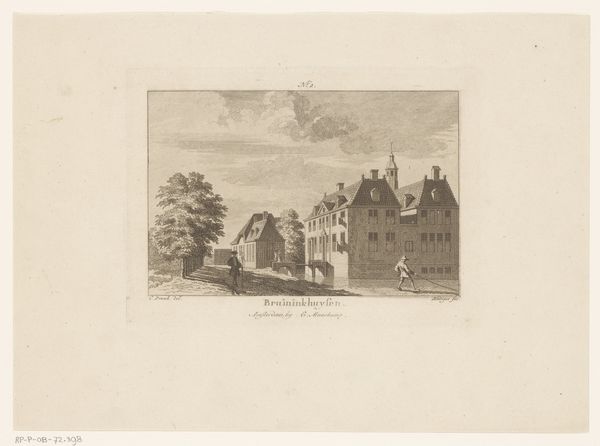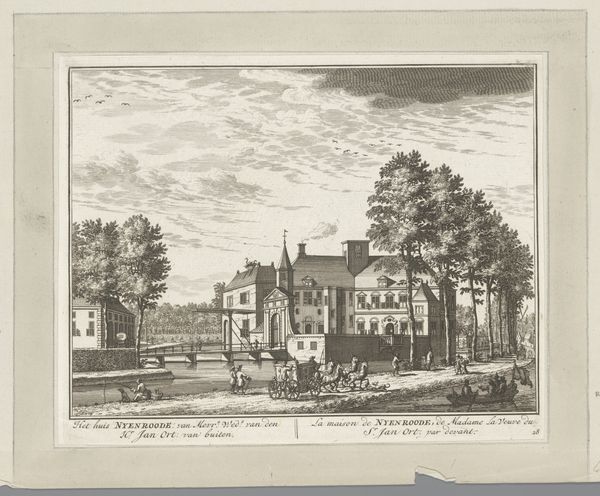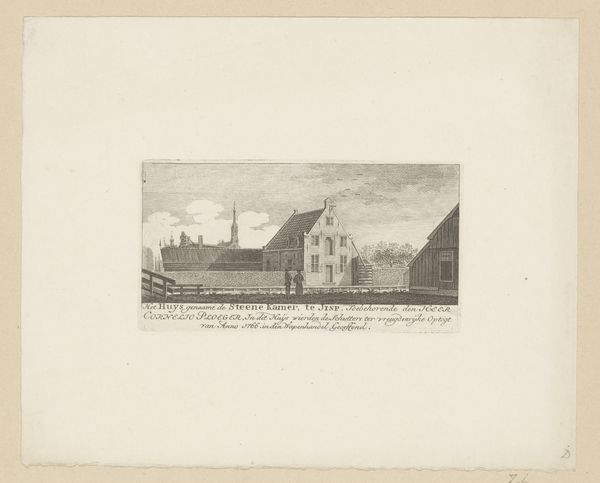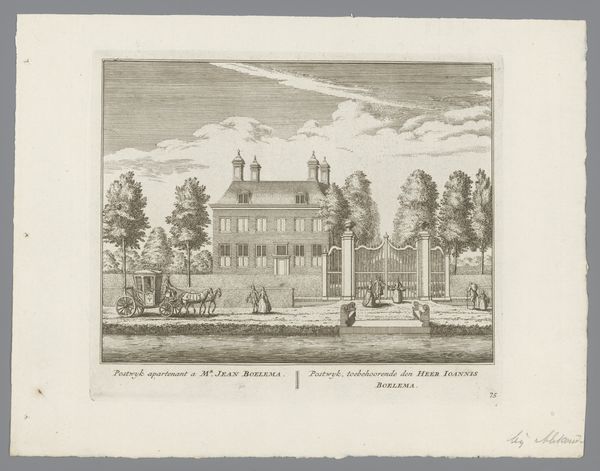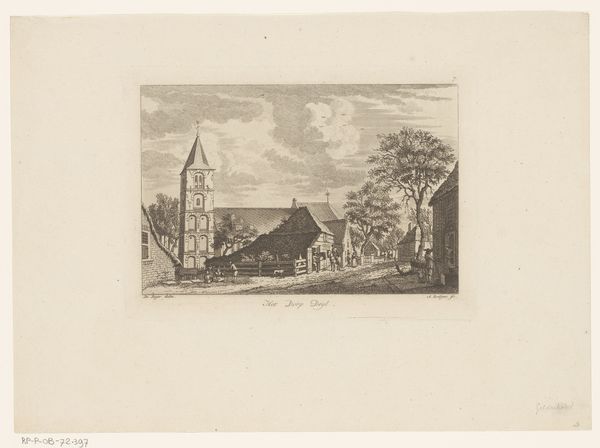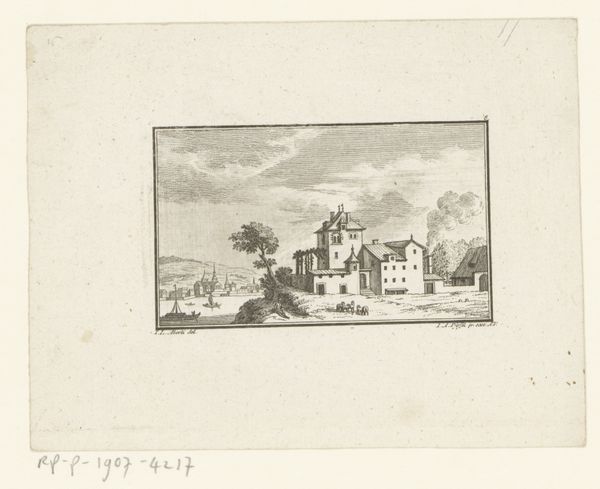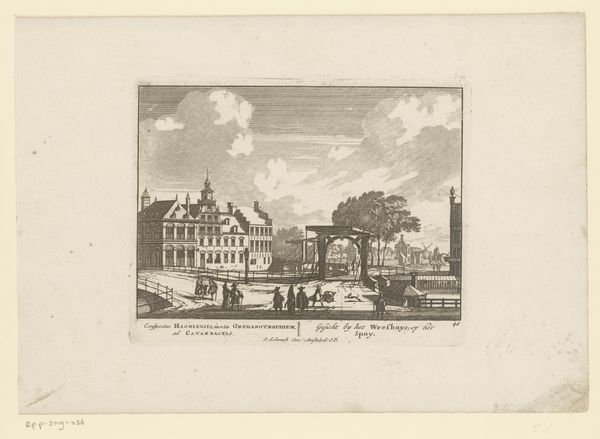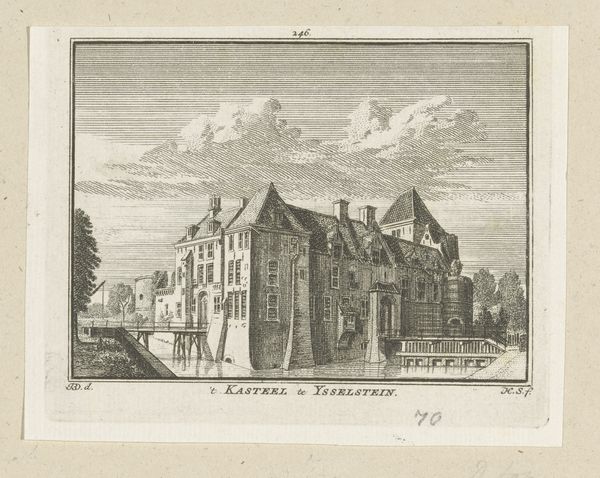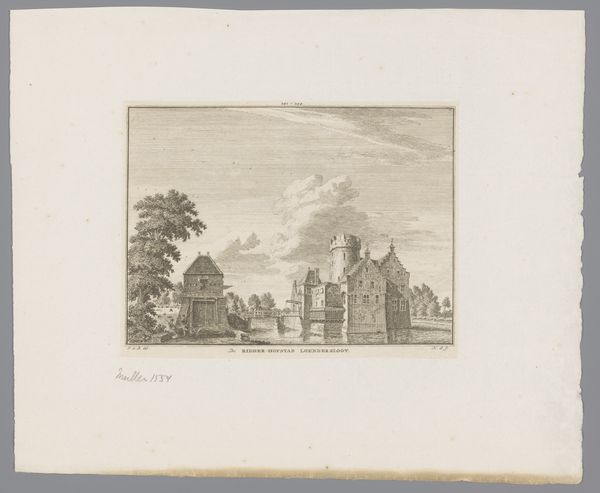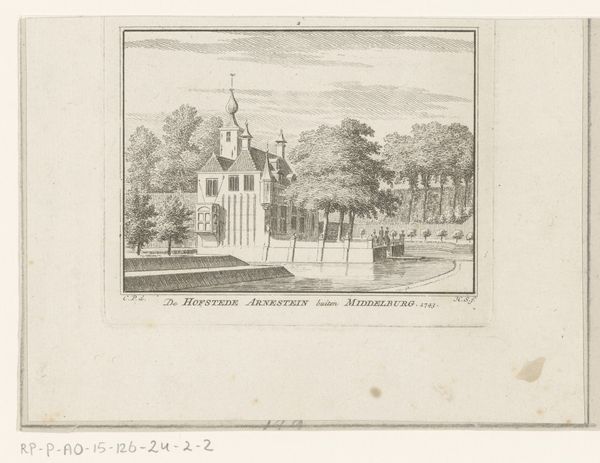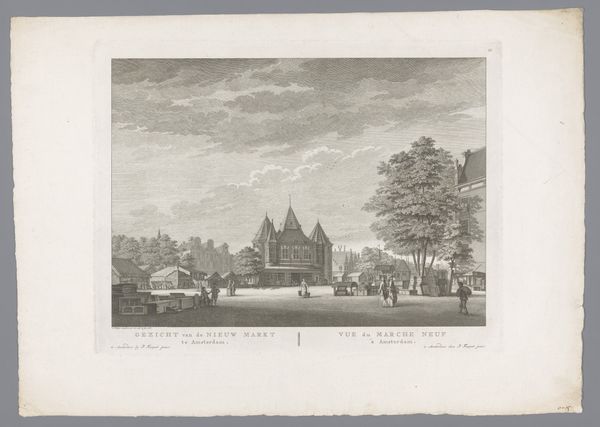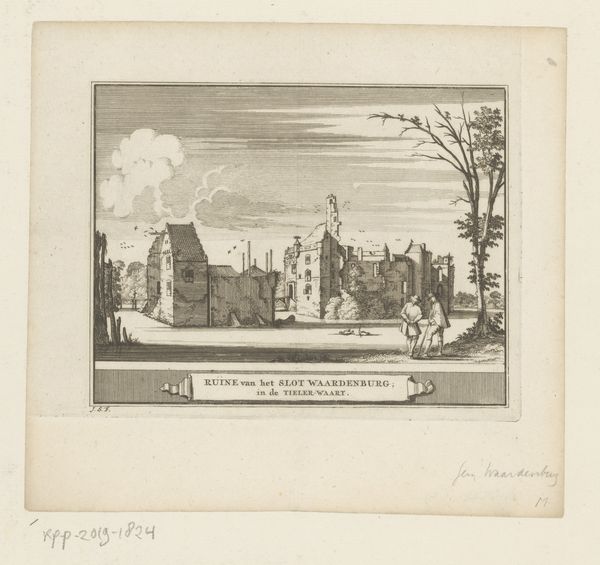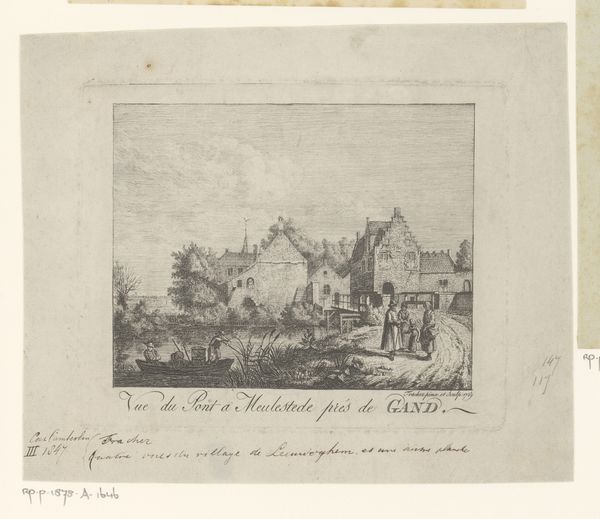
drawing, print, etching
#
drawing
#
baroque
# print
#
etching
#
landscape
#
cityscape
Dimensions: height 151 mm, width 204 mm
Copyright: Rijks Museum: Open Domain
Curator: Welcome. We’re looking at “Gezicht op het Kennemerland” – “View of the Kennemerland” – a cityscape produced after 1739 by Hendrik Spilman, currently held at the Rijksmuseum. Editor: Immediately, the contrast strikes me. There’s a certain quiet austerity to the scene despite its intricacy. All rendered so delicately with etched lines...It has an atmosphere, a contained, almost melancholic stillness. Curator: The Kennemerland was a region undergoing significant change. This work presents us with not just a place but a commentary on changing landscapes, on architecture and its place within the community. Note the presence of the solitary figure on the path; what narratives does that create? Editor: The artist certainly directs the eye; that diagonal of the path and the water lead towards the castle, dividing the picture plane to create space that emphasizes that figure. What is he thinking? And those stark horizontal divisions – the wall, the roofs, and the skyline, are all creating this effect of restraint. Curator: Indeed, Hendrik Spilman wasn't simply recording what he saw; rather he was producing work that helped forge a particular idea of Dutch identity, of history, progress and decline, through his representations of particular locales and sites. Hazendael itself appears here just after its demolition...a melancholy thought captured through its architectural portrayal and lone wayfarer. Editor: Demolition informs everything! You see the geometry now speaking to themes of transition and collapse. Notice the strategic use of negative space in the clouds and in the light reflected on the building itself - adding depth, enhancing that mournful feeling...it's as though the etching itself seeks to remember the Landhuis' architectural integrity. Curator: A way of preserving history and culture. Think, then, of the print as being accessible to the Dutch middle classes, for whom this region would have great symbolic weight. It serves to teach the value of the historic site. Editor: A stark vision, perhaps. An important dialogue between what has been, what is, and what is being lost, distilled through lines and composition into something evocative. Curator: Precisely; consider that each etching offered its owner new ways of seeing both Dutch identity and its landscapes. Editor: Ultimately a study of loss through light and line.
Comments
No comments
Be the first to comment and join the conversation on the ultimate creative platform.
